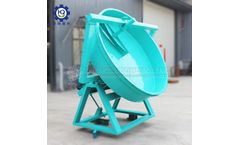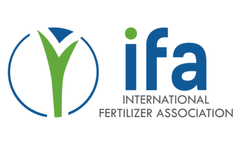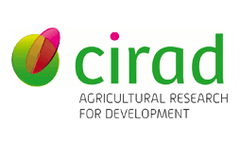Refine by
Mineral Fertilizer Articles & Analysis
18 news found
It is used to process everything from chemical powders, fly ash and soil amendments to minerals and ores, fertilizers and more. More and more fertilizer machine manufacturers are competing to sell, and the fertilizer granulator machine price is not the same. ...
Uralkali (the Company; Moscow Exchange: URKA), one of the world’s leading potash producers, provides the following comment on the conclusion of a long-term contract between Belarusian Potash Company (BPC) and IPL, India’s largest importer of mineral fertilizers. Alexander Terletskiy, Uralkali Trading CEO, commented: Considering the positive ...
It covers a range of product types including mineral fertilisers, organic fertilisers, organo-mineral fertilisers, soil improvers, growing media and plant biostimulants. It sets harmonised limits for a range of contaminants, such as cadmium, contained in mineral fertilisers. On 25th June 2019 the EU FPR was published in the Official Journal ...
Zhang’s achievements was a national fertilizer database, which helped the government recognise that farmers were applying more mineral fertilizer than was effective, leading to diminished returns and putting additional strain on the environment. ...
The activity of interacting soil organisms, such as fungi and bacteria promotes fertile soil that as a habitat is characterised by sufficient water, space, air, and nutrients. ...
‘Dutch agricultural soils are not future-proof’ was a widely accepted statement at the final meeting of the Public Private Partnership (PPP) Sustainable Soil. Breeders, chain partners, suppliers, the government and the science sector see a gradual deterioration in soil quality and are joining forces within the PPP to find a solution. “It isn’t a simple matter,” says ...
For instance, in 1961, 29% of phosphorus requirements for global croplands and grasslands came from mineral fertilisers, while 56% was derived organically, from manures, crop residues and human excrement. By 2013, 56% of agricultural phosphorus inputs came from mineral fertilisers, while 38% came from organic sources. Substantial variation exists in the ...
Scientists recommend policies that alternate between mowing and grazing to manage Europe’s high-nature-value grasslands. This comes after a new seven-year study found that a high plant-species diversity helps grasslands to maintain productivity and to resist depletion of phosphorus caused by livestock grazing and depletion of potassium caused by mowing. Grasslands with high levels of ...
Five major themes P in our world - the global phosphorus cycle, sustainability issues, food security, and geopolitical and governance issues P in our resources and environment - mining resources (natural phosphates), P processing and phosphate fertilizer production, transfers by erosion and impact of phosphorus on the environment (surface water eutrophication) P in ...
Nitrogen and phosphate are important fertilisers. But excessive amounts often found in fields and pastures end up polluting the ground and surface water. Furthermore, dairy farmers are squandering their profits by wasting these expensive fertilisers. The Koeien & Kansen [Cattle and Opportunities] project set up by two PhD candidates from Wageningen University, part of Wageningen UR, shows how ...
With the aid of a microwave sensor the system is able to identify and record the fertilizer distribution of a disc fertilizer spreader online and to regulate the setting parameters depending on the respective fertilizer variety and the working width. In this way the machine automatically ensures optimal distribution of the ...
“Normally when you apply P-containing fertilizers, you would incorporate them into the soil,” says Martin Shipitalo, lead author of the study. ...
The use of cattle manure in the study led to greater soil fertility by encouraging higher microbial activity, and the researchers suggest that it could potentially improve soil’s ability to cope with periods of difficult growing conditions. ...
Using old banana trees to make compost may help boost crop yields while cutting down water and fertiliser use, according to an Egyptian researcher. Banana-based fertiliser could cut about 20 per cent of the water used in irrigating maize and lead to better yields and improved soil properties — such as availability of micronutrients and soil moisture — a researcher at Egypt's National ...
They found that, as the population increases, farmers frequently cultivate cropland without allowing adequate resting periods for the soil to regain its fertility — thus reducing crop yields. Overall, they found that various land use scenarios reduced maize yields by up to 24 per cent over the period, whereas climate change scenarios reduced them by up to 18 per cent. ...
A recent study compares the effects of organic, 'natural' fertilisers, such as compost, with mineral, synthetic fertilisers, such as urea, on N2O emissions from Mediterranean soil. It suggests that there is little difference between the fertilisers, but that pig slurry offers the best overall balance in terms of emissions and crop yield. Nitrous oxide (N2O) is a powerful greenhouse gas (GHG). ...
Since 2005, conventional disposal of organic waste has been prohibited in Sweden. Instead, this waste is incinerated or separated at source, processed (composted or anaerobically digested) and recycled as fertiliser on crop land. A new study has investigated the use of organic waste from different sources as a fertiliser and found that residue from biogas production is an effective fertiliser. ...
Studies show that soil fertilized with organic materials, such as compost, could increase the amount of stored carbon and potentially help slow down greenhouse emissions. ...










